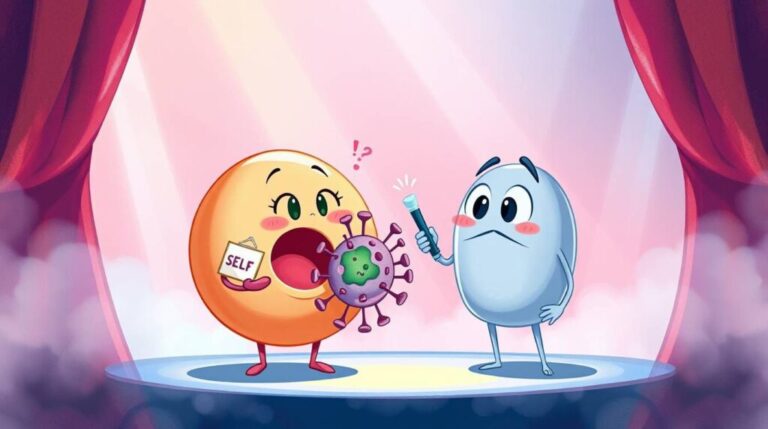Why Do Cells Age and Die 2025
Why Do Cells Age and Die 2025
Cells—the basic units of life—do not live forever. Like all living things, they have a natural life cycle: they grow, perform functions, divide, and eventually die. But why does this happen? Why can’t a cell just keep going endlessly?
In 2025, thanks to major breakthroughs in cell biology, genetics, and aging science, we now have a clearer understanding of the cellular aging and death process than ever before. Let’s explore what makes cells age, why they eventually die, and how this ties into larger systems like aging, disease, and life expectancy.
Book-Level Explanation
Cells age and die due to both internal mechanisms and external factors. There are two main biological processes that drive this:
1. Cellular Senescence
Cellular senescence refers to a permanent state where cells stop dividing but remain metabolically active. It’s usually triggered by DNA damage, oxidative stress, or the shortening of telomeres (protective ends of chromosomes). Senescent cells don’t die immediately, but they lose their ability to function normally and may release inflammatory signals that can harm neighboring cells.
2. Programmed Cell Death (Apoptosis)
Apoptosis is a highly regulated and natural form of cell death. It plays a vital role in development, immune response, and tissue homeostasis. When a cell is damaged beyond repair, or if it’s no longer needed (such as after an infection is cleared), it undergoes apoptosis to safely dismantle and remove itself.
Other factors also play key roles:
- Telomere shortening: Telomeres act like protective caps at the end of chromosomes. With every division, they get shorter. When they become too short, the cell can no longer divide.
- DNA damage: Radiation, toxins, and errors in replication can damage DNA. If the damage is too extensive, it can trigger senescence or apoptosis.
- Mitochondrial dysfunction: As cells age, mitochondria (energy-producing organelles) become less efficient and produce more reactive oxygen species (ROS), which damage cellular components.
These mechanisms are essential for the survival of organisms. They prevent the spread of damaged or potentially cancerous cells and help renew tissues.
Easy Explanation
Think of a cell like a little worker in your body. It has a job to do—maybe it builds things, cleans waste, or helps protect you from germs. But even the hardest worker gets tired over time. That’s basically what happens with cells.
Every time a cell divides, it makes a copy of itself. But with each copy, its “shoelace tips” (called telomeres) get shorter. When those tips are too worn out, the cell can’t divide anymore. It’s like trying to tie your shoes with frayed laces—it just doesn’t work.
Some cells also get sick from stress, like too much sun, pollution, or chemicals. When they’re damaged beyond repair, they self-destruct through a process called apoptosis. This is the body’s way of recycling broken or dangerous cells so new, healthy ones can take their place.
Sometimes, a cell doesn’t die right away but goes into “retirement” mode. It’s still alive but not really working anymore. These retired cells are called senescent cells. If too many build up, they can actually cause inflammation and problems in your body.
So, cells age and die to keep your body clean, efficient, and healthy. If they didn’t, damaged cells could cause serious issues like cancer.




Why This Matters in 2025
In the last few years, scientists have made major progress in understanding and even reversing some parts of the aging process. Some highlights:
- Researchers have identified compounds called senolytics that can selectively remove senescent cells from tissues. Early trials show these might help reduce age-related inflammation and improve health span.
- CRISPR and other gene-editing tools are being used to investigate telomere extension and DNA repair.
- Studies in model organisms have shown that controlling mitochondrial health can slow down cellular aging.
There’s even speculation that cellular rejuvenation techniques could one day delay aging and age-related diseases in humans.
Real-World Impact
The way cells age and die affects everything from your skin wrinkling to the development of Alzheimer’s, cancer, and heart disease. It also plays a role in immune system decline, making older adults more vulnerable to infections.
By better understanding this process, researchers can:
- Develop anti-aging therapies
- Create more effective cancer treatments
- Improve regenerative medicine (e.g., using stem cells)
- Enhance organ transplant outcomes
This field is central to the future of personalized and preventative medicine.
Conclusion
Cells age and die because it’s part of nature’s way of maintaining balance. While it might seem like a flaw, it’s actually a protective system that helps your body stay healthy. In 2025, scientists are closer than ever to unraveling the secrets of cellular aging—and perhaps even learning how to slow it down.
External Link for Further Reading:
Learn more about cell aging and programmed death on Wikipedia:
https://en.wikipedia.org/wiki/Cell_senescence
Our Blogs You Might Like
What If Human Consciousness Could Be Uploaded Into Light 2025
https://edgythoughts.com/what-if-human-consciousness-could-be-uploaded-into-light-2025
How Do Gut Bacteria Shape the Brain 2025
https://edgythoughts.com/how-do-gut-bacteria-shape-the-brain-2025
Disclaimer:
The easy explanation is designed to help readers of all backgrounds understand complex scientific concepts. If you’re a student, always follow your school’s guidelines and refer to your textbooks or academic materials when preparing for exams or assignments. We’re here to support your learning—not replace your curriculum.
What If We Could Alter Dreams in Real Time 2025
https://edgythoughts.com/what-if-we-could-alter-dreams-in-real-time-2025/
What if werewolves truly existed today?
https://edgythoughts.com/what-if-werewolves-truly-existed-today/






One Comment